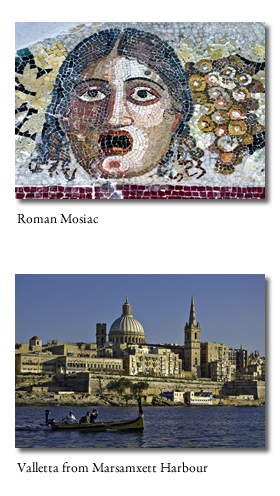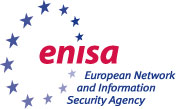
Do you have specific questions? Please send inquiries to
first-2012@first.org.
Direct line to conference office:
+1 312 646 1013
Direct mailing address to conference office:
FIRST Conference Office
219 W. Chicago Avenue, Suite 300
Chicago, Illinois 60654
 With 7,000 years of history, the Maltese Islands are steeped in culture and heritage. The Islands went through a golden Neolithic period, the remains of which are the mysterious megalithic temples dedicated to the goddess of fertility. Later on, the Phoenicians, the Carthaginians, the Romans and the Byzantines, all left their traces on the Islands.
With 7,000 years of history, the Maltese Islands are steeped in culture and heritage. The Islands went through a golden Neolithic period, the remains of which are the mysterious megalithic temples dedicated to the goddess of fertility. Later on, the Phoenicians, the Carthaginians, the Romans and the Byzantines, all left their traces on the Islands.
In 60 A.D. St. Paul was shipwrecked on the island while on his way to Rome and brought Christianity to Malta. The Arabs conquered the islands in 870 A.D. and left an important mark on the language of the Maltese. Until 1530 Malta was an extension of Sicily, the Normans, the Aragonese and other conquerors who ruled over Sicily also governed the Maltese Islands. It was Charles V who bequeathed Malta to the Sovereign Military Order of St. John of Jerusalem who ruled over Malta from 1530 to 1798. The Knights took Malta through a new golden age making it a key player in the cultural arena of 17th and 18th century Europe. The artistic and cultural lives of the islands were injected with the presence of artists such as Caravaggio, Mattia Preti and Favray (amongst many others) who were commissioned by the Knights to embellish churches, palaces and auberges.
In 1798 Bonaparte, on his way to Egypt, took over Malta from the Knights. The French presence on the islands was short lived as the English, who were requested by the Maltese to help them against the French, blockaded the islands in 1800. British rule in Malta lasted until 1964 when Malta became independent. The Maltese adapted the British system of administration, education and legislation. Malta became a Republic in 1974
The Malta Summit between U.S. President George H. W. Bush and U.S.S.R. leader Mikhail Gorbachev, took place December 2-3 1989, just a few weeks after the fall of the Berlin Wall. During the summit, Bush and Gorbachev would declare an end to the Cold War.
Malta became a member state of the European Union in May 2004.
This legacy, unique in the Mediterranean, is reflected in the country’s national architecture and collections. There are so many areas of heritage and culture to be explored—the 16th century masterpiece Grandmasters’ Palace, which is now parliament, the "Sacra Infermeria," which is now a fully equipped conference centre, the St. James Centre for Creativity—a superbly restored fortification where contemporary works of art are exhibited against the original rough-textured walls and rediscovered spaces. With these buildings, past and present blend into an enduring and admirable lesson in the art of living.
For more information about Malta, please visit The Official Tourism Site for Malta, Gozo and Comino.





